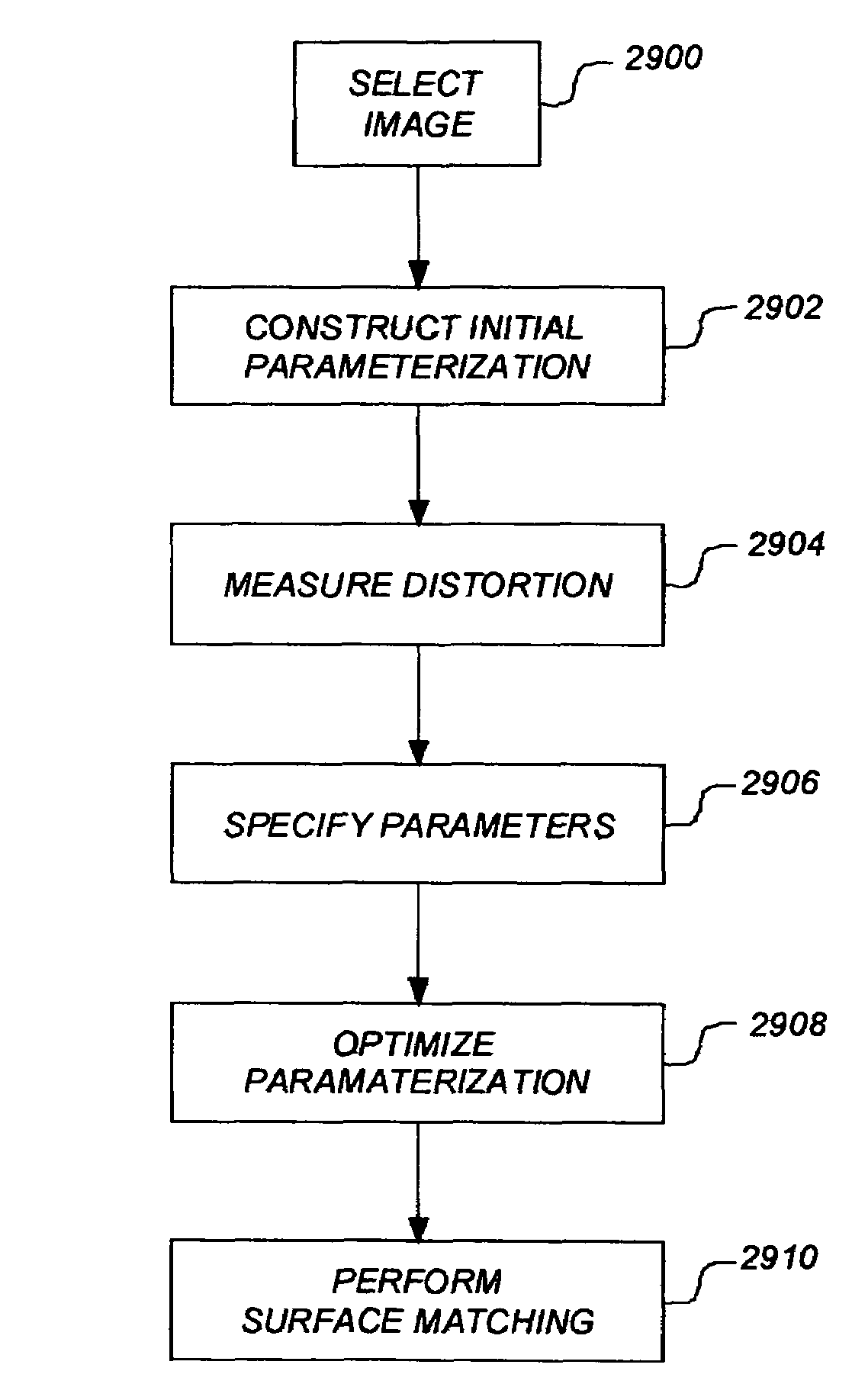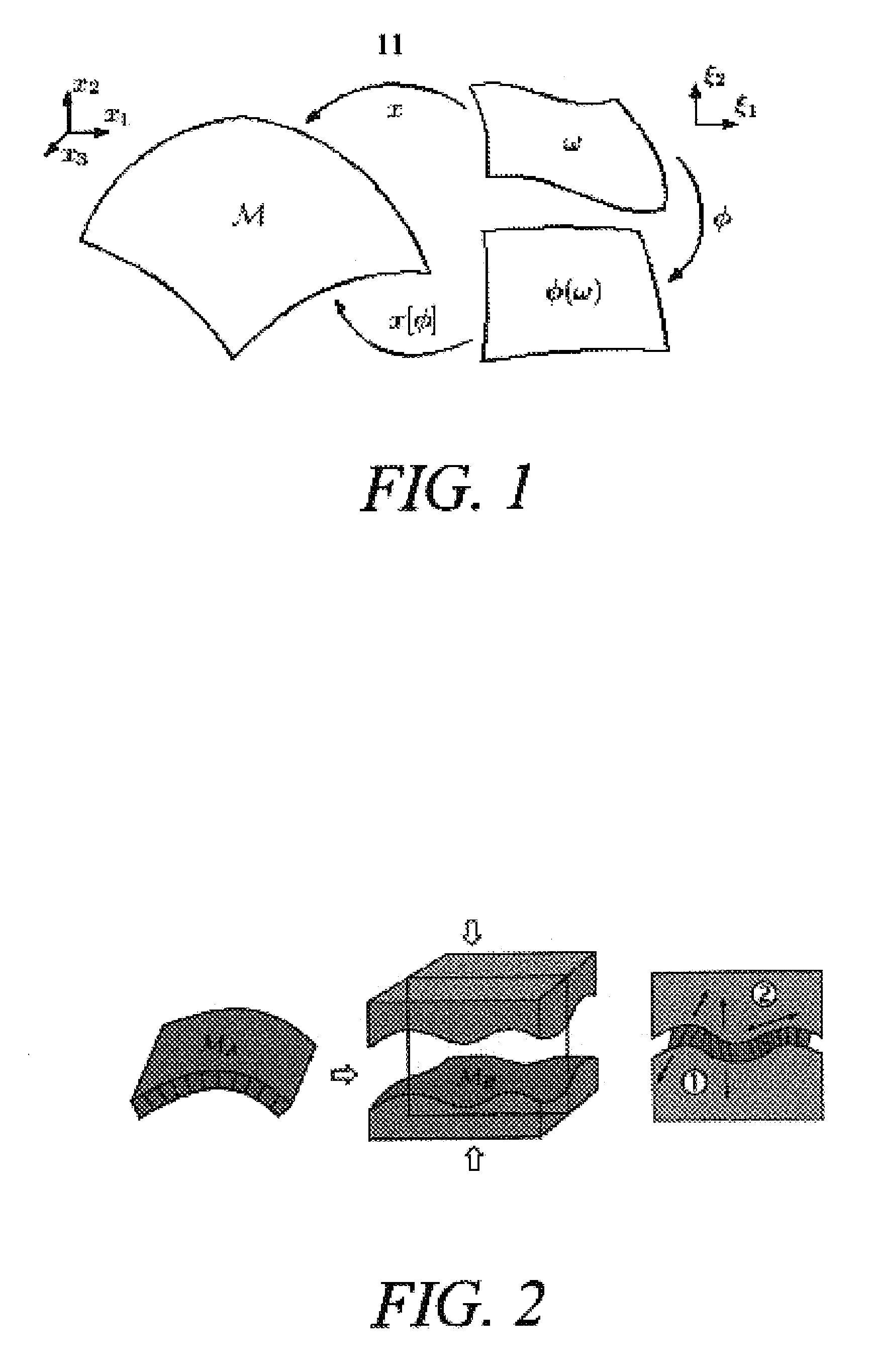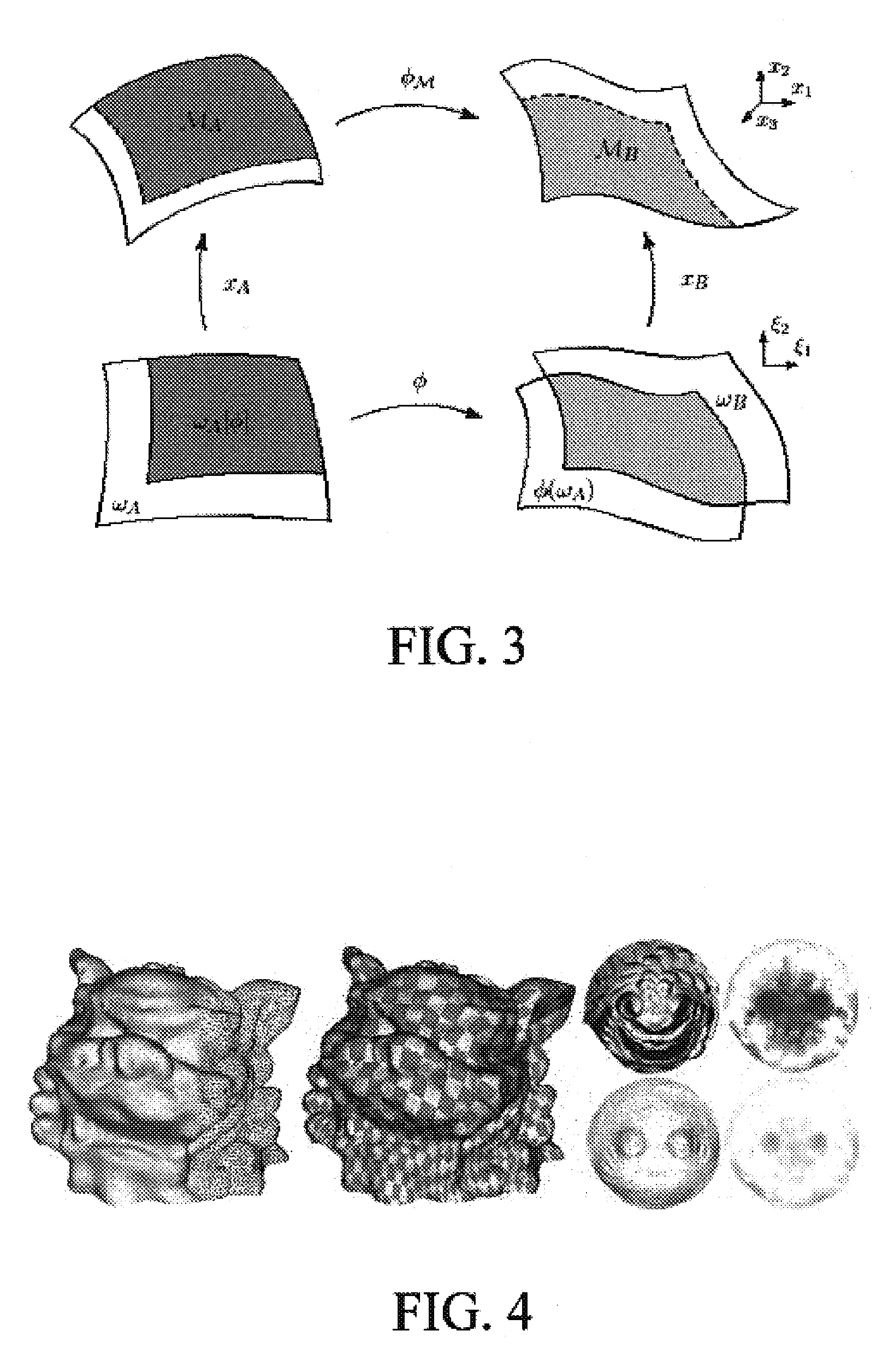Method for constructing surface parameterizations
a surface parameterization and parameterization technology, applied in the field of surface parameterization, can solve the problem of low distortion in the construction of smooth maps, and achieve the effects of low processing difficulty, high data sample variability, and highlighting flexibility and variety of parameterizations
- Summary
- Abstract
- Description
- Claims
- Application Information
AI Technical Summary
Benefits of technology
Problems solved by technology
Method used
Image
Examples
Embodiment Construction
[0062]In the following description, reference is made to the accompanying drawings which form a part hereof, and which is shown, by way of illustration, several embodiments of the present invention. It is understood that other embodiments may be utilized and structural changes may be made without departing from the scope of the present invention.
Contributions of the Invention
[0063]Some of the contributions of the invention documented in this document may be described in papers [10, 17, 30, 31].
[0064]The first contribution of the invention is the development of a variational framework for parameterizations. This framework encompasses the mapping of a region of the plane to a surface that is isomorphic to a disc, and the mapping between such surfaces. It is based on the rich mathematical theory built up over decades in the study of rational mechanics. Because of its roots in mechanics, our parameterizations are guaranteed to be smooth and locally bijective, and optimal parameterizatio...
PUM
 Login to View More
Login to View More Abstract
Description
Claims
Application Information
 Login to View More
Login to View More - R&D
- Intellectual Property
- Life Sciences
- Materials
- Tech Scout
- Unparalleled Data Quality
- Higher Quality Content
- 60% Fewer Hallucinations
Browse by: Latest US Patents, China's latest patents, Technical Efficacy Thesaurus, Application Domain, Technology Topic, Popular Technical Reports.
© 2025 PatSnap. All rights reserved.Legal|Privacy policy|Modern Slavery Act Transparency Statement|Sitemap|About US| Contact US: help@patsnap.com



